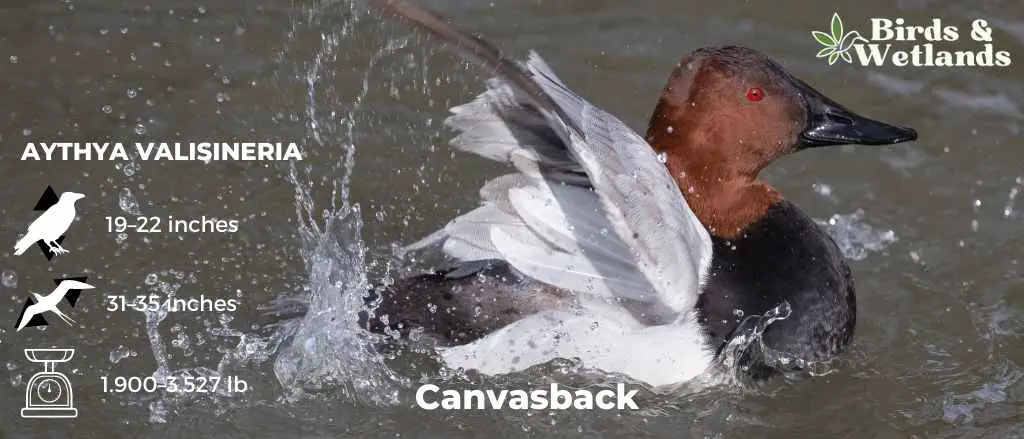The canvasback is the largest diving duck in North America. The genus Aythya is derived from the Greek word “aithuia”, an identified waterbird mentioned by Aristotle. The species name “valisineria” is derived from the canvasback’s favorite food, the American wild celery (Vallisneria americana).
The common name, canvasback, is derived from the belief of early European inhabitants of North America that its back was a color resembling canvas.
Scientific Name: Aythya valisineria
Height: 48–56 cm (19–22 in)
Wingspan: 79–89 cm (31–35 in)
Weight: 862–1,600 g (1.900–3.527 lb)
Description
The male canvasback is a striking bird with an impressive physical appearance. It has a large, white body contrasting with the dark black chest feathers. It has a chestnut-red head, and its eyes are bright red, giving it a vibrant and captivating presence.
Its long, slender neck curves gracefully into broad shoulders, emphasizing its size and power. The edges of its wings are elongated and pointed, like a sleek arrow in flight. Its wide bill is thick at the base and tapers to a sharp point at the end, enabling it to dive into the water for food with speed and precision.
The adult female canvasback has a less striking appearance than the male, with duller plumage. She is smaller than her male counterpart, with a white belly and pale brown back. The head, neck and chest of an adult female canvasback are reddish-brown. Her eyes are dark brown, and she has a slender profile.
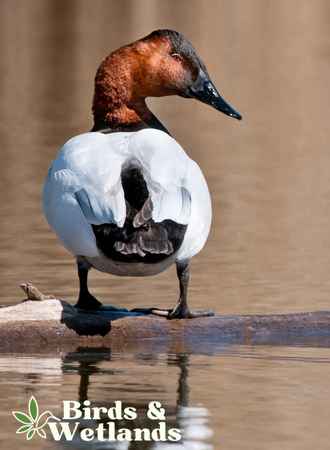
Listen to the Canvasback
The males croak while the females quack.
Range & Migration
The breeding range of the canvasback is vast and covers much of North America. The bird breeds in the United States, extending from the northern Great Plains to Alaska and Western Canada.
During its winter migration, it can be seen in the mid-Atlantic United States, along both coasts of the US and Mexico. In particular, it has been observed in California, Louisiana and Florida on its ideal wintering habitat. They are also regular visitors of Chesapeake Bay.
The canvasback is also strongly migratory, making long journeys between its breeding and wintering grounds. It has even been known to travel as far north as Washington State during its return to its northern breeding grounds in Canada and Alaska.
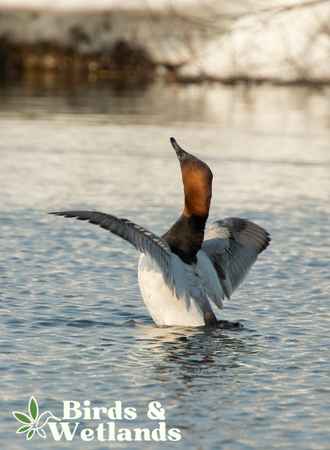
Habitat
The canvasback is a duck species that prefers to breed in marshland habitats with thick vegetation growing on the edges and other wetlands. These marshes generally have open spaces and taller aquatic plants, such as cattails or bulrushes, to shelter the canvasback.
During the spring and winter, these birds migrate to areas near lakes, coastal lagoons, sheltered bays, and estuaries. They seek out these more sheltered settings for protection from strong winds and storms during this season.
Diet & Food Habits
This duck subsists mainly on submerged aquatic vegetation, often found in wetlands. It primarily eats wild celery and other seeds, buds, leaves, plant tubers, and roots it can find in its environment.
This bird also occasionally dabbles in shallow waters to feed on insect larvae and snails. As such, its diet consists of both terrestrial and aquatic elements.
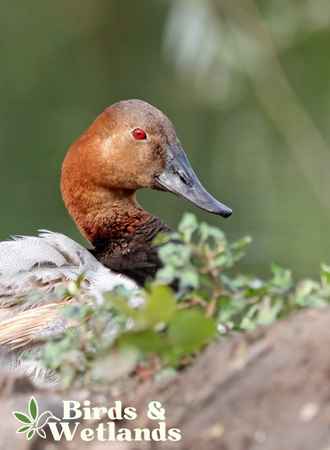
Nesting & Mating Habits
The nesting habits of the canvasback are quite unique and interesting. They tend to nest near where they were reared, usually in late May or early June when the weather is warming up.
Like most ducks, canvasbacks prefer to nest close to open water, such as marshy areas and reedbeds. The female builds a bulky nest made with reeds and sedges and then lines it with down plucked from her own body, which acts as an insulating layer for the eggs when she leaves the nest.
The female lays 7 to 9 greyish-olive eggs and incubates them for about 24 to 28 days. Upon hatching, the mother will look after the young ducks for several weeks.
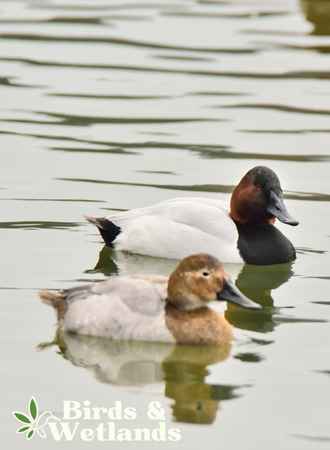
Population & Conservation Status
Although the overall canvasback populations are declining, it is currently assigned the conservation status of “Least Concern”.
Hunting
Canvasback hunting is allowed in most states but is subject to federal and state hunting regulations and limits.
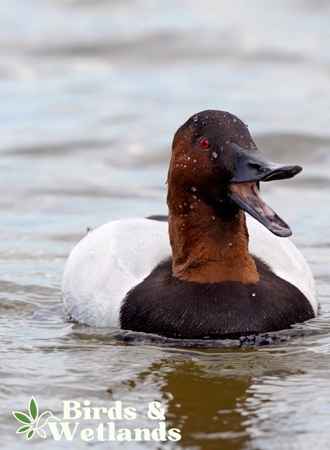
Key Points
- The canvasback nests on the ground, near the water.
- Canvasbacks are more frequently found in deep water compared to other diving ducks.
- The adult male has a chestnut head, whitish body, grayish back, black rump, blackish brown tail, bluish gray feet and black breast.
- The female has a darker brown chest, grayish brown flanks and a light brown head.
- The diet of the canvasback consists mainly of plant material.

